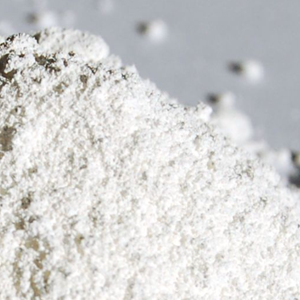Zinc oxide (ZnO) is an inorganic compound that appears as a whitish powder, which is insoluble in water. When reduced to nanoscale particles—usually under 100 nanometres in diameter—ZnO takes on new properties that make it highly reactive and useful in a variety of ways. Their small size gives ZnO nanoparticles a large surface area and higher catalytic activity compared to their bulk counterparts.
The properties and behaviour of ZnO nanoparticles depend greatly on the way they are produced. Manufacturers use various methods, such as thermal evaporation, sol-gel processes, and biological synthesis, to create nanoparticles with specific properties for different applications. These methods influence factors like particle size, shape (from spherical to tubular forms), and chemical characteristics. Companies like Adnano technologies are manufacturing high quality Zinc oxide nanoparticles for various applications.
Key Qualities of Zinc Oxide Nanoparticles
- Nanoscale Size: These particles are smaller than 100 nm, offering a large surface area relative to their volume, which enhances their reactivity.
- High UV Absorption: ZnO nanoparticles effectively absorb and scatter UV light, making them perfect for UV-protective products.
- Catalytic Activity: Known as a powerful catalyst, ZnO nanoparticles facilitate various chemical reactions, useful in processes like environmental remediation.
- Antibacterial Properties: They can be toxic to certain bacteria, fungi, and viruses, making them useful in antimicrobial coatings and medical treatments.
- Electrical Conductivity: ZnO nanoparticles exhibit enhanced conductivity, making them valuable in electronic applications such as sensors and conductive coatings.
Applications of Zinc Oxide Nanoparticles
1. Sunscreen and Cosmetics
- UV Protection: With their strong UV-absorbing properties, ZnO nanoparticles are a popular ingredient in sunscreens. They block harmful UV rays without affecting visible light, protecting the skin while staying transparent.
- Skincare Products: ZnO’s gentle properties also make it a key ingredient in lotions and ointments, where it forms a protective barrier to soothe and protect the skin.
2. Biomedical Applications
- Antibacterial and Antifungal Agents: ZnO nanoparticles generate reactive oxygen species (ROS), which interact with and damage microbial cells. This makes them highly effective in wound dressings and antimicrobial coatings for medical devices.
- Drug Delivery Systems: With biocompatibility and targeted delivery potential, ZnO nanoparticles are promising carriers for medication, delivering drugs directly to target cells. Research suggests they may even aid in cancer therapy, selectively attacking cancer cells while sparing healthy ones.
- Anti-inflammatory Uses: ZnO nanoparticles are capable of penetrating deep into irritated skin, making them beneficial for anti-inflammatory and wound-healing treatments.
3. Food Packaging and Agriculture
- Antimicrobial Packaging: ZnO nanoparticles are incorporated into food packaging to prevent microbial contamination, helping to keep food safe from bacteria and fungi.
- Plant Protection: In agriculture, ZnO nanoparticles combat plant pathogens, supporting healthier crops and reducing losses due to bacterial and fungal infections.
4. Electronics and Industry
- Nanoelectronics: Due to their electrical conductivity, ZnO nanoparticles are used in sensors, transparent conductive coatings, and other electronic devices.
- Catalysts for Chemical Processes: Their catalytic properties make ZnO nanoparticles valuable in industries like environmental remediation, where they aid in breaking down pollutants.
Usage of Zinc Oxide Nanopowder
- Prepare Equipment: Ensure all equipment is clean and dry to prevent contamination.
- Measure the Desired Amount: Carefully measure the required quantity of nanopowder for the formulation.
- Add Nanoparticles Gradually: Slowly add the ZnO nanoparticles to the solvent, stirring gently to prevent clumping.
- Use Mechanical Agitation: Ultrasonication, magnetic stirring, or homogenization can help break apart nanoparticle clusters for even distribution. Be cautious with stirring intensity to avoid overheating.
Conclusion
Zinc oxide nanoparticles are a standout in the world of nanomaterials. Their unique properties, from UV-blocking abilities to catalytic activity, make them indispensable across industries. With applications ranging from skincare and food safety to drug delivery and electronics, ZnO nanoparticles are reshaping multiple fields with their versatility and efficacy. As research advances, we may see even more innovative uses of ZnO nano powder in improving health, safety, and technology worldwide.
For more info: -
ZnO nanoparticles manufacturer
Zinc Oxide Nanopowder Supplier
Source: https://sites.google.com/view/what-zinc-oxide-nanoparticles/home





Comments